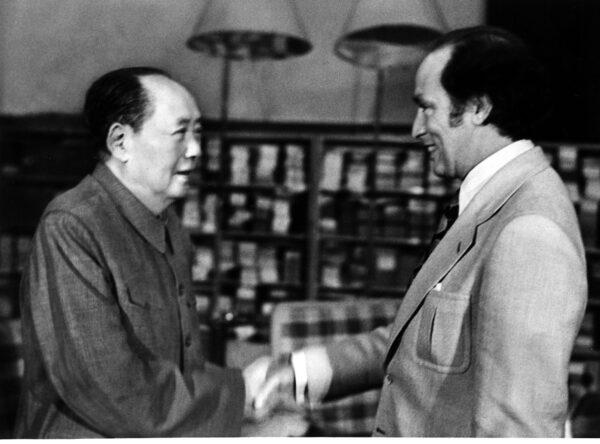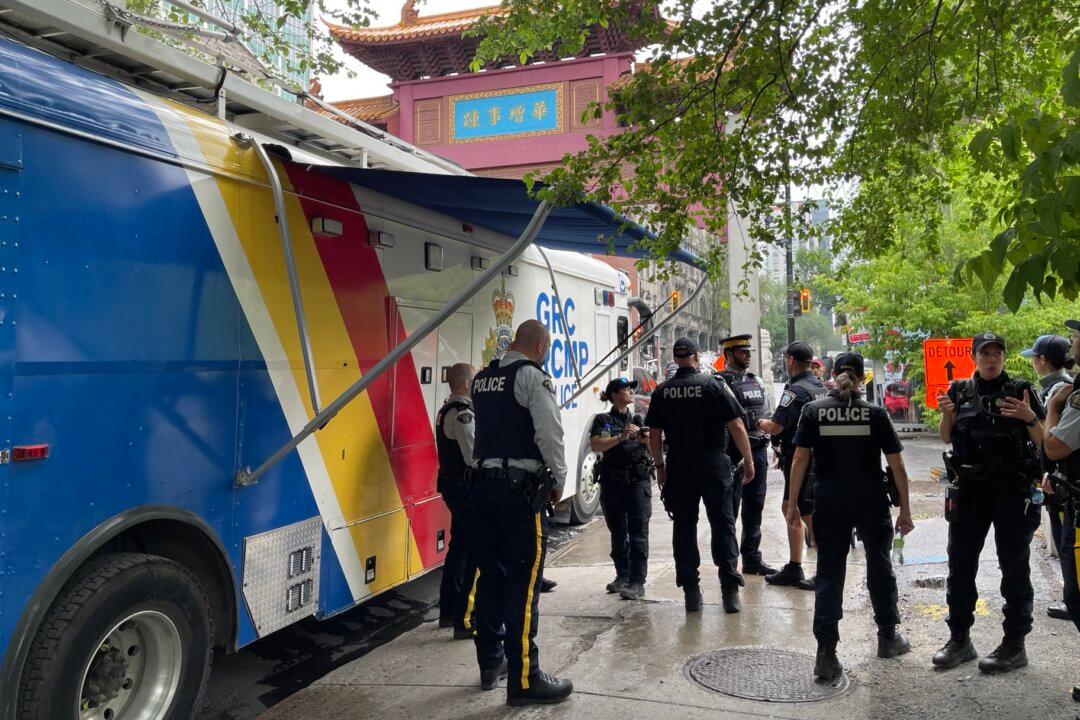In the early morning of Oct. 8, 1970, as Chairman Mao Zedong got wind that his diplomats had reached an agreement with the Canadian delegation on the terms of establishing diplomatic relations, he reportedly laughed and said, “Now we have made a friend in the backyard of America!”
Thus began a relationship that brought the Chinese communist regime out of isolation, paving the way for other Western governments to establish ties with Beijing and for the regime to secure a seat in the United Nations and other multilateral organizations crucial to its growth.
As the decades have passed, Canada has given more and, if the recent diplomatic row with China is anything to go by, been respected less.
“As China needed to expand the anti-hegemony [anti-U.S.] reunion united front, we had to strengthen the relations with ‘middle ground’ countries,” Chen said.
Almost half a century later and a decade after the speech by Chen, his peers fear no repercussions when lecturing Canada on how it should behave.
In a recent press conference, China’s new ambassador to Canada, Cong Peiwu, warned Ottawa not to follow U.S. lawmakers’ lead in creating legislation to sanction Chinese officials over the Hong Kong crackdown. He added that Canada should denounce the pro-democracy activists in Hong Kong.
Cong’s predecessor, Lu Shaye, had called Canada and its Western allies white supremacists for asking for the release of Michael Kovrig and Michael Spavor, Canadian citizens who have been incarcerated in China for almost a year following Canada’s arrest of Huawei executive Meng Wanzhou.
While some have said diplomats making such statements should be expelled, the ambassadors have gone unchallenged by Canada’s leaders.
Commenting on China’s technological rise and intellectual property theft, U.S. Senator Jim Risch said on Nov. 22 at the Halifax International Security Forum—where China’s rise was the main topic of discussion—that the average person can’t help but wonder “how did they [China] get here?”
The same question can be asked about the communist regime’s rise to become an existential threat to Western democracies, as characterized by former U.S. national security advisor H.R. McMaster in a Munk debate in May.
Ottawa’s Hand Up
Shortly after winning the federal election in 1968, Prime Minister Pierre Trudeau remarked on the need for world recognition of the People’s Republic of China (PRC) multiple times. According to Mei Ping, China’s former ambassador to Canada, Beijing took note.
“[The Chinese foreign ministry] sent cables to all our diplomatic missions abroad asking them to watch out and report immediately if they are approached by Canadian diplomats,” Mei said at the event in Shanghai in 2010.
In his talk at the same event, Chen made reference to Pierre Trudeau’s trip to China as a young man, adding that he was “ideologically leftist and as a result blacklisted and denied entry by the U.S.” The ban was later removed after he made an appeal.
“After taking office, he intended to distance himself from the U.S. on China policy. He made it public that Canada would do something that the U.S. didn’t agree or like to do and used the analogy of touching the tail of the tiger,” Chen said.
Diplomatic relations between Ottawa and Beijing began after Canada relented on recognizing the PRC as the legitimate government of China and effectively suspended diplomatic relations with the regime’s rival, the Kuomintang in Taiwan.
With Canada’s help, the PRC got a seat at the United Nations General Assembly in 1971, and many other Western countries started establishing their own relations with the regime.
“The … list of countries establishing diplomatic relations with China expanded rapidly, and so did the international standing of China,” Chen said.
Besides helping China join other major international bodies, Canada went on to help China’s development with foreign aid via both bilateral and multilateral channels. Canadian taxpayers’ money poured into China by the millions each year through the Canadian International Development Agency (CIDA) and international agencies such as various U.N. bodies.
Canada also helped China develop its science and technology programs beginning in the 1980s, bringing Chinese scientists and engineers to Canada for training and sending Canadian specialists to China to help improve the Chinese higher education system. Canada sold China nuclear reactors and helped in developing the country’s infrastructure.
Both Clinton and Canada’s prime minister at the time, Jean Chrétien, sold the idea of China’s inclusion in the WTO on the expressed hope that linking China closer to Western economies would improve the rule of law in China and help turn the regime—which just 12 years earlier had slaughtered pro-democracy protesters in Tiananmen Square—toward allowing more freedom for the Chinese people.
“WTO accession is part of China’s broad agenda of developing the rule of law, to ensure fair and equal treatment before the courts for both people and companies,” Chrétien said at the time.
The Aftermath
China is now the world’s second-largest economy and has the second-highest military spending in the world, after the United States.
Kovrig and Spavor remain behind bars, and Beijing continues to block Canada’s canola imports against WTO rules, according to Ottawa. Inside China, millions of people, including Uyghurs in Xinjiang, Falun Gong adherents, Tibetans, and Christians continue to face persecution, death, and even forced organ harvesting, and the Beijing-backed government in Hong Kong is violently cracking down on pro-democracy protesters.
A day after the official’s rebuke of Freeland, Prime Minister Justin Trudeau began a speech on China by saying Canada has deep ties with the Chinese people, saying later in the speech that Canada will always “defend Canadians and Canadian interests.” In the same speech, he spoke about Russia, saying Canada opposes Russia’s annexation of Crimea.
“It is therefore quite jarring to come upon the China section, which opens with bizarrely warm and friendly sentiments, talks about economic opportunities rather than China’s actual economic blackmail of Canada,” Mulroney said.
“[If] there is one thing that China looks down on, [it’s] people who are too timid,” she told Global News, urging the prime minister to “stand up and speak out” to China.
In the early years of Trudeau’s first term as prime minister, before the latest Ottawa-Beijing diplomatic row over Meng’s arrest erupted and as his government was actively trying to develop warmer relations with Beijing, he seemed convinced that China would soon surpass the United States as the world’s number one economy.
“The issue is more how we can get the attention of the country that will soon have Earth’s largest economy when the rest of the world has been working to develop relationships,” Trudeau said in 2016.
It’s not American citizens that China imprisoned following Meng’s arrest, even though it was the United States that asked for her arrest on Canadian soil. If China were to surpass the United States in might, as it has Canada, would that change? And between the two adversaries that Pierre Trudeau set out to establish relations with the way he saw fit, one a rule-of-law-based democracy and the other a communist totalitarian regime, which one is currently holding Canadian citizens hostage?
With all that has transpired between China and Canada in the months since Meng’s arrest, and in the broader global context of China’s behaviour on the world stage after decades of the West catering to Beijing and welcoming the regime into major multilateral initiatives, it’s worth pondering whether Ottawa will now re-evaluate its China policy.
Richard Fadden, a former national security adviser to prime ministers, said recently that Canada should start seeing both China and Russia as adversaries.
Trudeau responded by noting China’s economic influence in the world and business opportunities for Canada, and added that his government will follow Canadians’ wish for Ottawa to “stand up for our values and our rights.”
“We have condemned the arbitrary detention of Michael Spavor and Michael Kovrig, and we’re continuing to … demonstrate that we will stand up for our interests as a country, we will engage with the world in a constructive and positive way, and we will at the same time ensure that we are looking for opportunities for Canadians,” Trudeau said.
It’s fair to say the reporter’s question was left unanswered.





